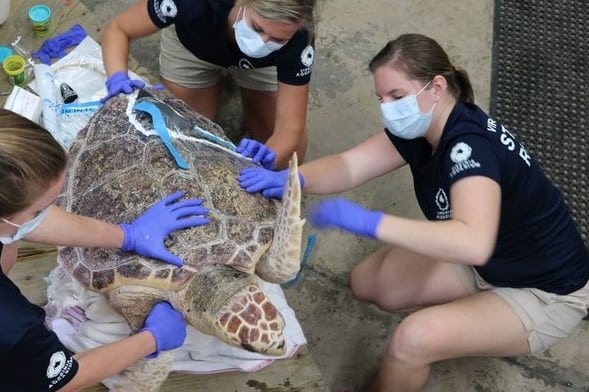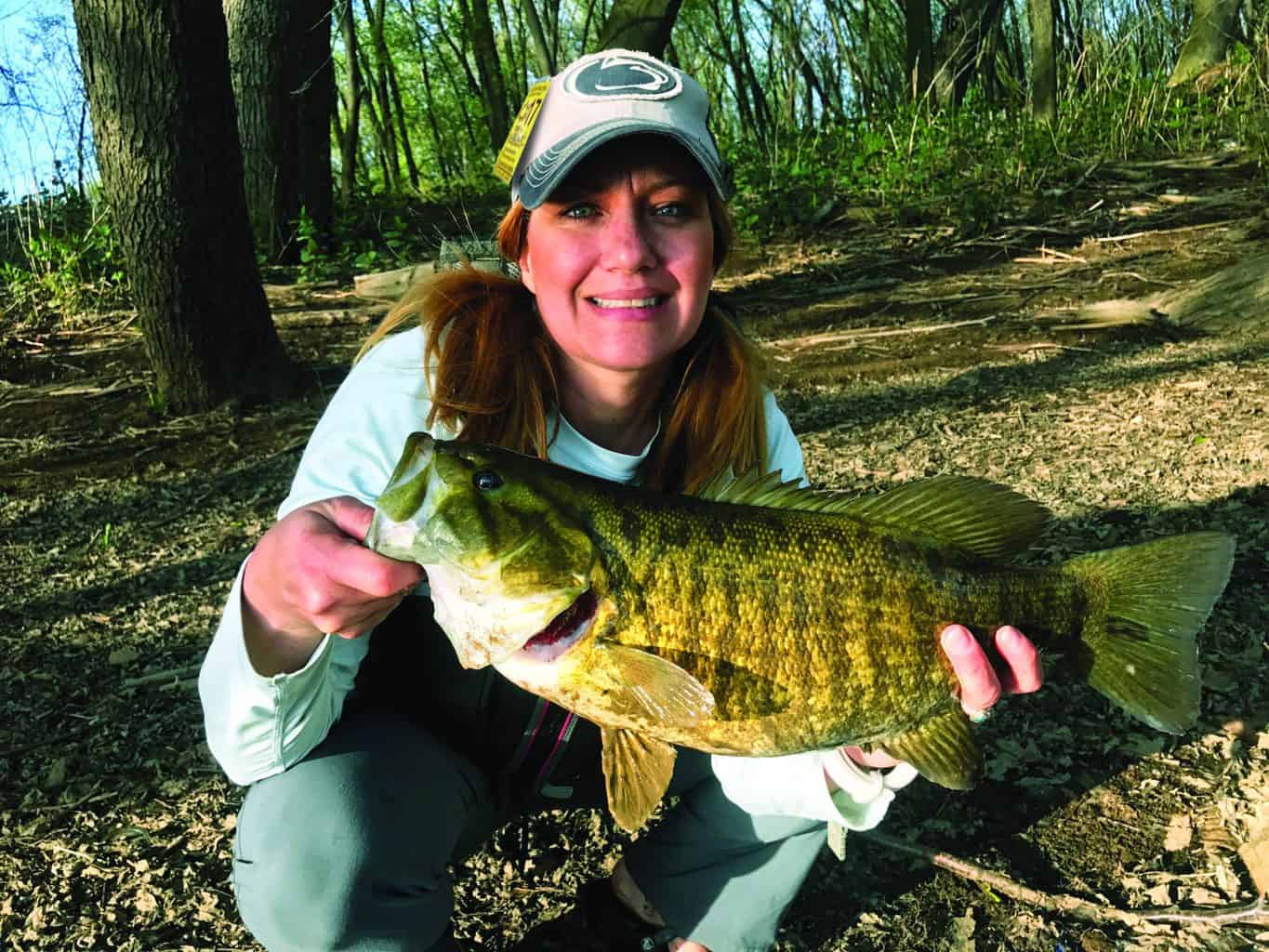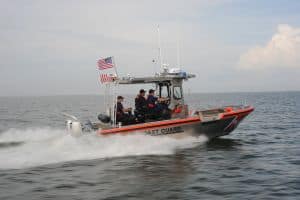There’s a happy ending to what started as a sad discovery: a loggerhead sea turtle accidentally hooked by an angler in Norfolk with four fish hooks in his body and additional injuries from a vessel strike.
The loggerhead was saved with a combination of high-tech medical care and playdough. Yes, the kind you molded into shapes as a kid.
The Virginia Aquarium and Marine Science Center’s Stranding Response Program admitted the turtle (and nicknamed it Seaweed) after the fisherman called in his catch from the Ocean View Fishing Pier last July 4th.
The Virginia Aquarium says Seaweed had three hooks in addition to the one that had caused the fisherman to accidentally catch him. They determined with x-rays the turtle also had substantial fractures to its carapace (top shell) that could have meant possible spinal injuries. The Aquarium says the wounds were encrusted with barnacles, algae and mussels and had probably been there for some time, and were probably caused by a vessel strike.
A CT san and MRI found Seaweed’s spinal cord was not damaged, and the Stranding Response team was able to remove all of the hooks. To heal the large fractures to the loggerhead’s shell, the team appealed to Kinetic Concepts, Inc., a 3M company that makes a vacuum-assisted wound closure machine (for humans).
The wound therapy has shown promise in shortening the healing time for turtle shell trauma, and the company loaned its machine and materials to the Aquarium for free.
There was one wrinkle in the plan, though: for the vacuum-assisted closure machine to work, there must be an airtight seal around the wounds, and the size and location of Seaweed’s wounds made that difficult. The team used playdough and other materials as a filler to provide a complete seal.
The procedure was a success, and months later, the Aquarium says Seaweed’s wounds are healing well. The team is “cautiously optimistic” the loggerhead can eventually be released back into the ocean.
To find out more about the Stranding Response Program and how to support it, click here.
-Meg Walburn Viviano




